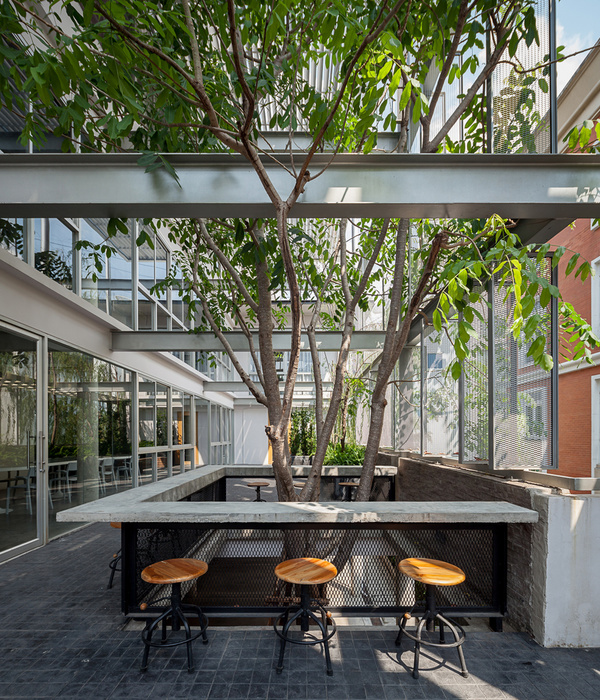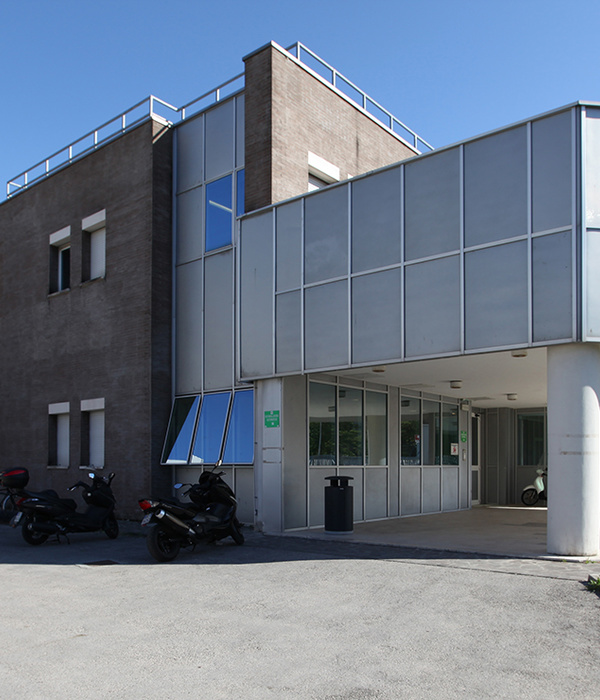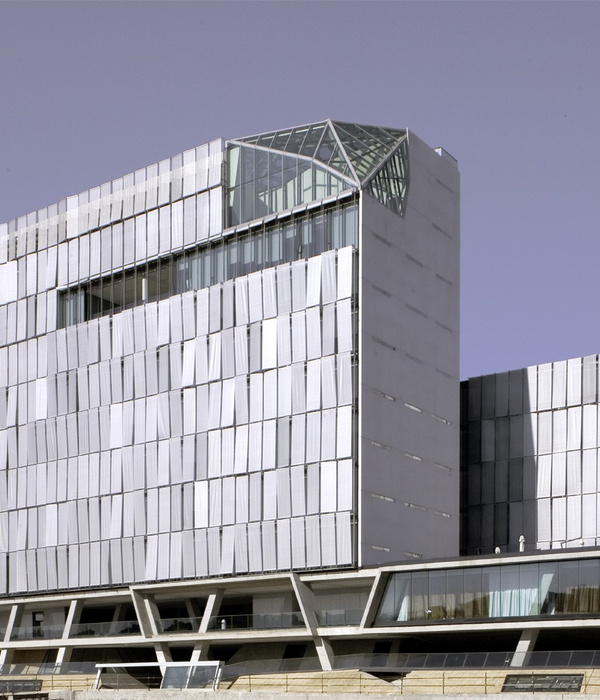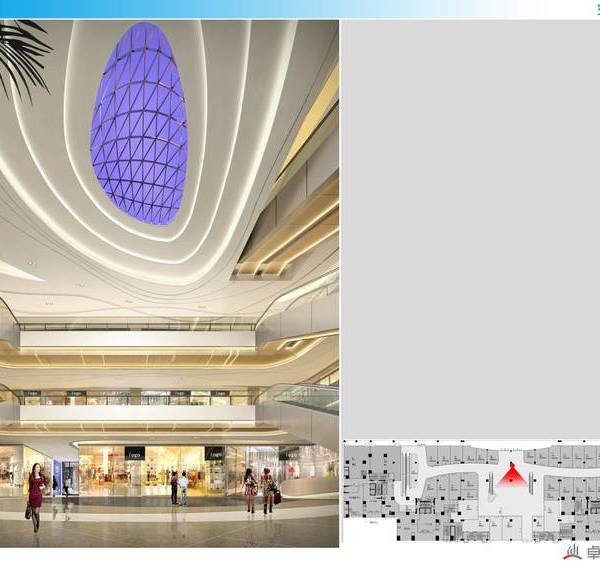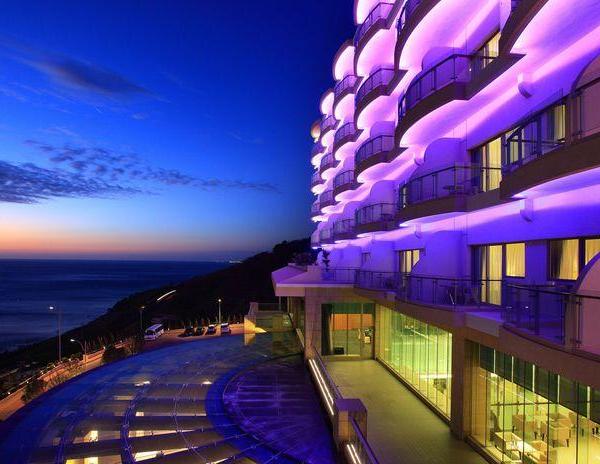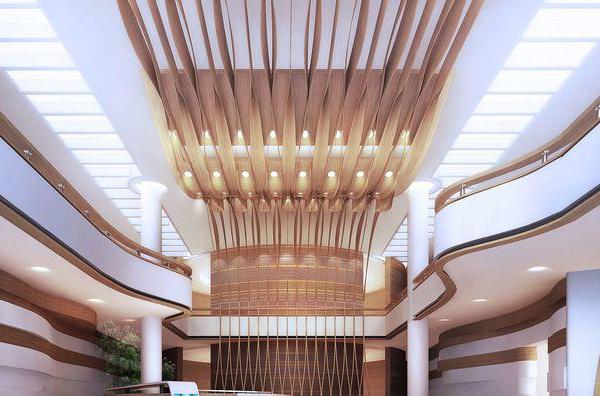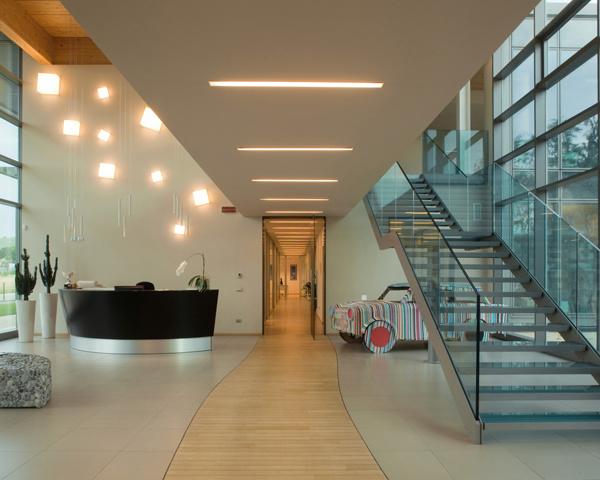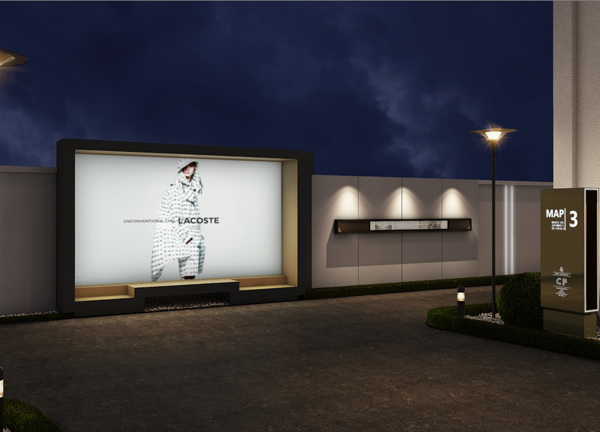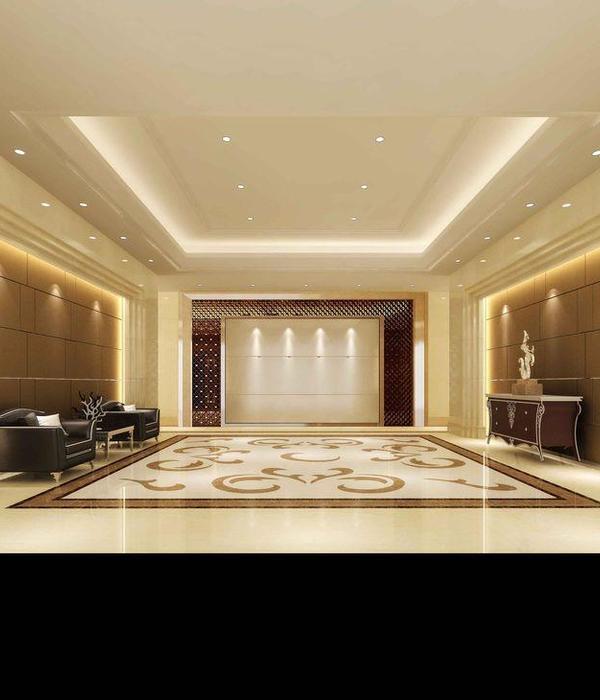MVRDV赢得了世茂深港国际中心的设计竞赛,将打造一座占地101300平方米的混合功能综合体。“深圳露台”位于深圳市龙岗区大运新城,其设计方案是从27家国际事务所的参赛作品中挑选而出。以可持续性为设计重点,整体项目旨在为蓬勃发展的大运新区构建一个核心,作为全新的立体城市客厅,将小型画廊、图书馆和露天剧院等20多种功能包罗其中。
MVRDV has been selected as the winner in a competition to design the 101,300-square-metre, mixed-use Shimao ShenKong International Centre. Located in Universiade New Town, Longgang District, Shenzhen, MVRDV’s Shenzhen Terraces was selected from 27 entries by international design firms. Designed with sustainability as a focus, the completed project will form the core of the thriving university neighbourhood, acting as a new three-dimensional urban living room with more than 20 programs, including a small gallery, library, and outdoor theatre.
▼“深圳露台”南侧鸟瞰,Birds’ eye – south ©Atchain + MVRDV
MVRDV设计的“深圳露台”致力于通过景观、休闲、商业与文化的无缝融合来为地区赋予活力和创新力。项目地处龙岗区的中心地带,是高层住宅、商业综合体和各类体育和教育设施的交汇处。优越的地理位置将极大地促使该项目成为该地区标志性的公共空间。
MVRDV’s Shenzhen Terraces aims to bring vitality and innovation to the area through a seamless integration of landscape, leisure, commerce, and culture. Located in the heart of the Longgang district at the meeting point of high-rise housing, commercial complexes, and sports and educational facilities, the site is ideally located to serve as a defining public space within the region.
▼项目地处深圳龙岗区的中心地带,the project is located in the heart of the Longgang district ©Atchain
“深圳露台”的核心理念是以堆叠平台的形式来实现新建筑与既有景观的融合。露台引人注目的水平线条与周围高楼的垂直造型形成对比,以柔和的曲线创造出宁静的观感。
The central concept of Shenzhen Terraces is to merge the existing landscape with the new development by using stacked plateaus for its various buildings. The predominantly horizontal lines of the terraces contrast with the vertical lines of the surrounding high-rises to bring about a sense of tranquillity through their slow curving shapes.
▼露台的水平曲线创造出宁静的观感,the terraces bring about a sense of tranquillity through their slow curving shapes ©Atchain
“深圳露台”将适宜步行的景观、多功能空间以及公共交通相结合,有望在未来成为周边地区可持续发展的枢纽。丰富的植物和水景能够在降低气温的同时为城市中的野生动物提供栖息地;花园和雨水收集系统则可以提供食物和水源。混凝土建筑将以可再生混凝土为骨料,并在屋顶上覆盖以大面积的光伏电池板。
Combining a pedestrian-friendly landscape with a mixture of functions and public transport, Shenzhen Terraces is poised to become a sustainable hub for the surrounding area. The abundant planting and water features reduce the local temperature and provide habitat for urban wildlife, while gardens and rainwater collection generate food and water resources. The concrete used in the buildings themselves will be made using recycled concrete as the aggregate, and photovoltaic panels will adorn extensive portions of the rooftops.
▼文化广场:适宜步行的景观、多功能空间以及公共交通相结合,Cultural Plaza: a pedestrian-friendly landscape is combined with a mixture of functions and public transport ©Atchain
一系列“露台”包含了各种不同的功能:高大的悬挑空间使来访者免于受到日晒的侵扰,同时提供了歇息和赏景的空间。阴凉的露台中包含植物和水池,能够降低凉廊的温度并为室内建立气候缓冲区。露台的边缘在特定的位置下降以连接不同的楼层,并自然地形成一个小型的露天剧场。在其他位置,向内缩进的立面强调出入口位置,通过易于辨识的空间帮助来访者进行定位。
The terraces are adapted to serve a diversity of functions: large overhangs shield the visitors from the hot sun, while offering places to sit and enjoy the view. These shaded terraces create places for plants and water basins that cool the verandas and create a climate buffer to the interiors. The edges of the terraces dip at strategic points to form connections between the various floors and to double as small outdoor auditoriums. In other places, the facades are pushed inwards to emphasize entrances and create recognizable places within the scheme to help visitors orient themselves.
▼露台的边缘在特定的位置下降以连接不同的楼层,并自然地形成一个小型的露天剧场,the edges of the terraces dip at strategic points to form connections between the various floors and to double as small outdoor auditoriums ©Atchain
体量最大的一座建筑位于场地东部,包含了公交车站、会议中心和创业中心,其中央设有一个宽阔的露天中庭。最后,不同的建筑之间通过桥梁元素彼此连接,使综合体的二层成为一条连续的路径,同时与周围的其他建筑实现互联,从而令这座深圳最新的城市客厅与其环境背景相交融,作为城市的一部分向所有人开放。
The largest building – containing among other things a bus terminal, conference centre, and entrepreneurship centre on the east of the site – is carved out in its centre to form an open-air atrium. Finally, bridging elements are introduced between the various buildings, turning the second floor into a continuous route and connecting it with the surrounding developments. These connections knit Shenzhen’s newest urban living room into its context, making it one with the city and offering access for all.
▼露天中庭,the open-air atrium ©Atchain
MVRDV联合创始人Winy Maas表示:“深圳从1970年代以来一直发展迅速。在这样的城市,必须谨慎地去考虑如何将公共空间和自然环境谨慎地融入到密集的城市肌理当中。世茂深港国际中心城市客厅将成为一个极好的例子,并将在深圳新城区的开发过程中成为重要公共空间的典范。深圳露台的目标是成为一个即使在高温天气下也能够吸引人们去游玩和聚会的场所,它将为大学城带来一个绝对凉爽的空间,让所有的公共活动都能在户外进行。它将成为真正意义上的公共建筑。”
“Shenzhen has developed so quickly since its origins in the 1970s”, says MVRDV founding partner Winy Maas. “In cities like this, it is essential to carefully consider how public spaces and natural landscape can be integrated into the densifying cityscape. The urban living room of the Shimao ShenKong International Centre will be a wonderful example of this, and could become a model for the creation of key public spaces in New Town developments throughout Shenzhen. It aims to make an area that you want be outside, hang out and meet, even when it is hot – a literally cool space for the university district, where all communication space can be outside. It will truly be a public building.”
▼深圳露台将成为真正意义上的公共建筑,Shenzhen Terrace will truly be a public building ©Atchain
景观设计由MVRDV与Openfabric合作完成,与露台的圆润轮廓形成呼应。人行路径之间置入了绿色植物和公共功能区。成块状分布的植物带模仿了当地的亚热带天然树林,与长满青草的小丘、遍布着棕榈树的广场、公共艺术装置、反射池以及攀岩和乒乓球活动区形成和谐的关系。景观一直延续到建筑的顶部,未覆盖光伏电池板的区域置入了绿色草坪,作为向游客开放的场地。
The design’s landscaping, developed in collaboration with Openfabric, echoes the pebble-like forms of the terraces above to create patches of greenery and public programming between pedestrian routes. These patches host planting that imitates the sub-tropical natural forests of the region, mixed alongside features such as grassy hills, palm tree-filled plazas, public art, reflective pools, and activity zones for pursuits such as climbing or table tennis. The landscaping also extends to the roofs of the buildings, with a green lawns that are accessible to the users occupying the areas that are not covered with photovoltaic panels.
▼景观与上方露台的圆润轮廓形成呼应,the design’s landscaping echoes the pebble-like forms of the terraces above ©Atchain
深圳露台由MVRDV设计,客户为世茂集团,景观部分与Openfabric合作设计。 Shenzhen Terraces was designed by MVRDV for Shimao Group in partnership with landscape designers Openfabric.
{{item.text_origin}}



